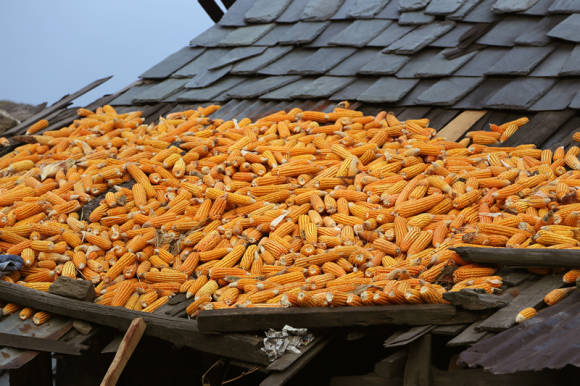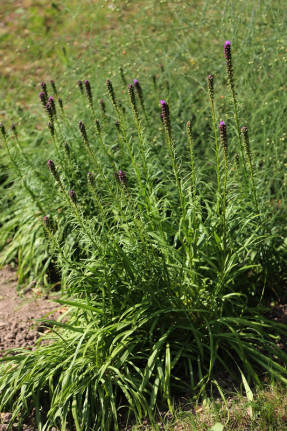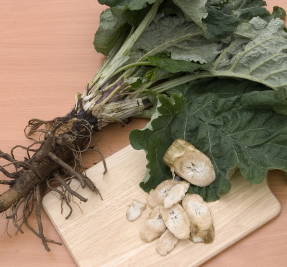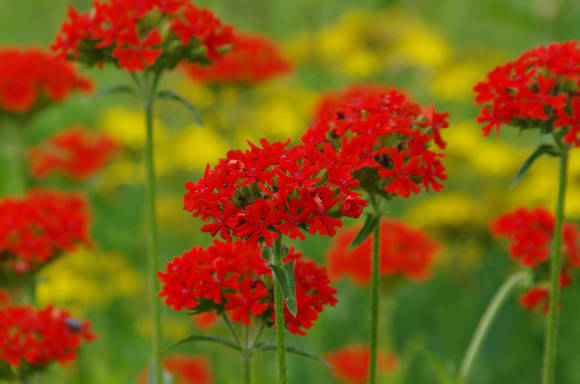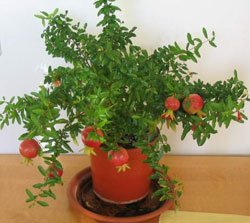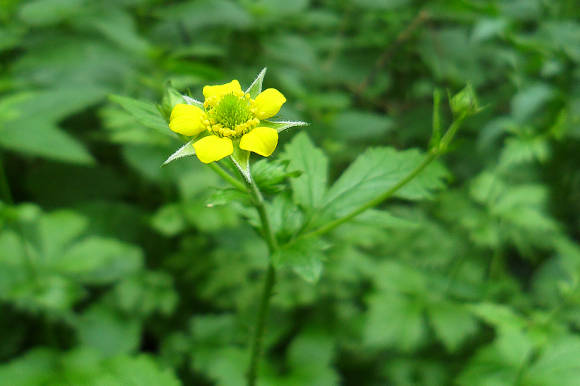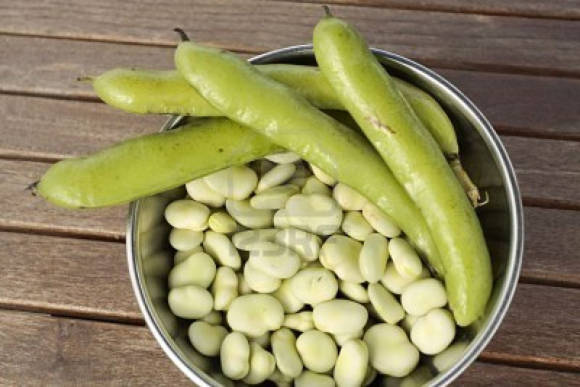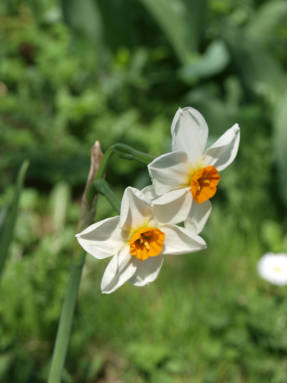
One of the "pluses" of growing daffodils is their ability to grow for quite a long time in one place. The growth activity of a particular variety depends on the multiplication factor, but regardless of it, the optimal period for growing daffodils without transplanting is on average 4-5 years. In old gardens, this period can reach 10-11 years. How to determine after what period of time a particular variety needs to be transplanted?
The signal for transplanting is poor flowering: a decrease in the size of the flower and the height of the plant, an outbreak of disease. Some growers advise to dig up daffodils annually, while others leave them free to grow. It all depends on the purpose of growing: the production of planting material (bulbs), getting cut flowers or decorative garden decoration in the form of ceremonial or imitating natural growth. Therefore, gardeners individually choose for themselves a "way of communication" with daffodils, depending on their capabilities and goals.
After the end of the flowering period, the leaves of daffodils remain green for several weeks. In no case should they be removed, since at this time there is an accumulation of nutrients in the bulb. As soon as the foliage turns yellow (this happens around the end of July, 50-60 days after flowering) and becomes easy to separate, the bulbs must be dug up. It is very important not to miss this moment: if you dig the bulbs earlier, they will not have time to go through all the necessary processes, and if later, you can lose the planting site and damage the bulbs when digging.

Certain precautions are required both when digging (so as not to damage the bulbs with a shovel or other cutting tool) and immediately after digging. Bulbs should not be left in an open area to avoid sunburn and possible attack by a daffodil fly. If you keep a collection, each variety should be labeled and stored in a separate container. The soil is shaken off the bulbs and roots and stored in a cool, shaded place with constant ventilation. In a summer cottage, it can be an attic, a dry basement, or a special shed.
The pre-drying process takes 2-3 weeks and takes place at a temperature of + 22 + 24 ° C. After that, the nests are cleaned and divided. This is done very carefully so as not to damage the base. Dry, loosely attached outer scales are removed, but the bulb cannot be peeled to white juicy scales. The bulbs are examined for signs of disease, and loose children are separated. Further, the bulbs, if necessary, are sorted by analysis and stored at a temperature of + 10 + 17 ° C until planting. During the entire storage period, the relative humidity should be at the level of 70-80%.
 |  |
With proper and regular care, feeding, weeding, watering, daffodils are less susceptible to disease and pest attacks. But, unfortunately, daffodils, like other plants, are food for various insects and microorganisms. Therefore, it is so important to pay attention to the condition of the bulbs during storage and before planting.
During the drying and storage process, bulbs with signs of disease are discarded in two stages. The first is after pre-drying when dividing the nests, the second is immediately before planting or during calibration.
Very often, daffodils are affected by fungal diseases.. Symptoms of fungal diseases and the outcome of their lesion are similar. Let's list the most common of them:
 |  |  |
- Fusarium (bottom rot)... The disease starts from the bottom (the pathogen penetrates through the roots), spreads up the bulb. When excavated, the scales are dark brown, with a pinkish-white bloom between them. The bulbs are soft to the touch. During the growing season, the leaves have yellow or brown tips, then they dry out.When stored in low humidity conditions, the bulbs dry out, mummify and crumble. With a small lesion, symptoms are not visible, so diseased bulbs are often planted with healthy ones, which causes a new infection. Poor transportation and storage conditions, mechanical damage, high humidity plus high air temperature, high doses of nitrogen and phosphorus fertilizers contribute to the development of the disease. The disease is transmitted through soil, planting material, plant debris.
- Botrytis (gray rot)... Under the covering (external dry) scales of the bulb, a fluffy gray bloom, black dots (sclerotia). During the growing season, light brown spots on the leaves, peduncles and flowers rot. The spread of the disease is facilitated by low air temperatures, prolonged rains, and very dense plantings. The disease is transmitted through soil, bulbs, plant debris. If lightly infected bulbs are selected for planting together with healthy ones, they do not sprout in spring or seedlings with a gray bloom appear.
- Sclerotiniasis (sclerocial rot)... On the top of the bulbs and in the soil around them, there is a white cotton-like bloom with black dots (sclerotia). If infected bulbs are planted, they do not emerge in spring or weak seedlings appear. In the future, the bulbs rot. The factors contributing to the spread of the disease are long-term cultivation without digging, compacted plantings. The disease is transmitted by contact of diseased bulbs with healthy ones.
- Penicillosis (penicillous rot)... On the bulbs, spots with a greenish-blue bloom, then the bulbs rot. In spring, the affected bulbs do not germinate or sprout poorly. Prolonged rains while the bulbs are in the ground and high humidity at low temperatures in storage, mechanical damage contribute to the spread of the disease. The disease is transmitted through soil, bulbs, plant debris.

Daffodils are also affected by pests, both common with other plants (bear, slugs, larvae of the click beetle - wireworms), and specific.
The most malicious pest on the territory of the Moscow region was daffodil fly (large and small). Its larvae penetrate the bulb and feed on juicy scales, replacing the contents of the bulb with waste products. The bulbs are soft, emit a very unpleasant odor, then rot and die.

During the growing season, the leaves wilt and dry out. The first flight of flies occurs in June-July, after the flowering of daffodils. They lay eggs on the soil near the plants. The larvae penetrate the bottom (in the large daffodil fly, 1-2 larvae, in the small one, 5-10 each). After their development in the small daffodil fly, the second emergence occurs in August-September. Risk factors are long-term cultivation without transplanting, the presence of diseased and weakened plants. Often, when cleaning and dividing the nests, the bulb with the larva inside is still dense, there are no visible signs of damage, so it gets to healthy ones, but during the storage and development of the larva, the bulb becomes soft and must be discarded.
Other common pests in the Moscow region and some other regions - nematodes and root onion mite... A characteristic sign of nematode damage is concentric browning in the transverse section of the bulb. The bulbs are soft, especially around the neck. During the growing season, the leaves become covered with small yellow spots, then turn yellow completely, the peduncles become lower.

A risk factor is the presence of weeds (they are intermediate hosts). The pathogens can live on plant debris for five to six years, retaining their viability. Ticks penetrate into the bulb through the bottom and through mechanical damage, eat the bottom and scales, after which dust remains. Females (about 1 mm in size) lay eggs on the bulbs. The pest can persist in the soil and on plant debris.
On the site during the growing season, the leaves turn yellow, then wither, the plants look underdeveloped. The spread of the pest is facilitated by high humidity, high air temperature, the presence of sick or damaged bulbs by other pests. They usually fight against pests and diseases together and carry out a whole range of measures.
Prevention of diseases and pests
- Application of optimal doses of fertilizers. An excess of phosphorus and nitrogen contributes to the development of fusarium, potash fertilizers increase resistance to it.
- Daffodils are not planted on the infected area for five years.
- Digging and destruction of diseased plants during the growing season, destruction of plant residues.
- Disinfection of storage, containers.
- Selection of healthy planting material.
- Compliance with agrotechnical techniques: loosening, weed control, timely digging and planting.
- Compliance with storage conditions: quick drying of the bulbs after harvesting, timely cleaning of old scales and roots, relatively low storage temperature (+ 18 ° C) and low humidity (at 60%, the development of mites stops).
Disease and pest control measures
- Against fungal diseases, before planting, daffodil bulbs are soaked in industrial cultivation - in a 0.2% solution of basezol, benlate, 0.3% rohor (BI-58) for 30 minutes, at home - in a solution of the Maxim preparation for 30 minutes.
- At the beginning of the growing season, plants are sprayed with 1.5% Bordeaux liquid.
- The bulbs are treated with hot water (+ 43.5 ° C) for 3-5 hours (from a nematode, a daffodil fly). Precise temperature control is essential, as the flower bud can be damaged.
- Against nematodes, drugs are used carbation, nemaphos.
- Against the daffodil fly - 0.2% Fufanon.

Narcissists are susceptible to infections of many viruses (Narcissus Mosaic Virus, Yellow Stripe Virus, White Stripe Virus, Latent Narcissus Virus, Cucumber Mosaic Virus, Tomato Ring Spot Virus, and others). The fight is difficult due to various transmission methods (with sap, processing tools, with vegetative propagation, with seeds, pollen, through the soil). Carriers are aphids, cicadas, thrips, whiteflies, beetles, nematodes, and ticks. A diseased plant is a constant source of infection, and diseased trees and shrubs are reservoirs of the virus. The infection is latent. Therefore, wild plantings, plantings of vegetable, fruit and berry crops often pose a threat of infection for nearby daffodil plantations. Symptoms of viral diseases are often similar (light, dark green or purple spots, stripes, streaks on the leaves, underdeveloped flowers, poor flowering, shrinking bulbs).
Viral diseases are difficult to treat, so only preventive measures are taken:
- Protection from vectors.
- Removal and destruction of affected plants.
- Planting healthy, virus-free planting material.
- Planting large bulbs, as infested plants often produce small bulbs.
Obtaining healthy bulbs of daffodils in industrial cultivation is carried out by thermotherapy, growing apical meristematic cells on artificial media, using inhibitors that suppress the reproduction of viruses in a living plant (derivatives of purine and pyrimidine).
At home, the whole range of preventive measures against diseases and pests, as well as the timely culling of affected bulbs, is of paramount importance.
